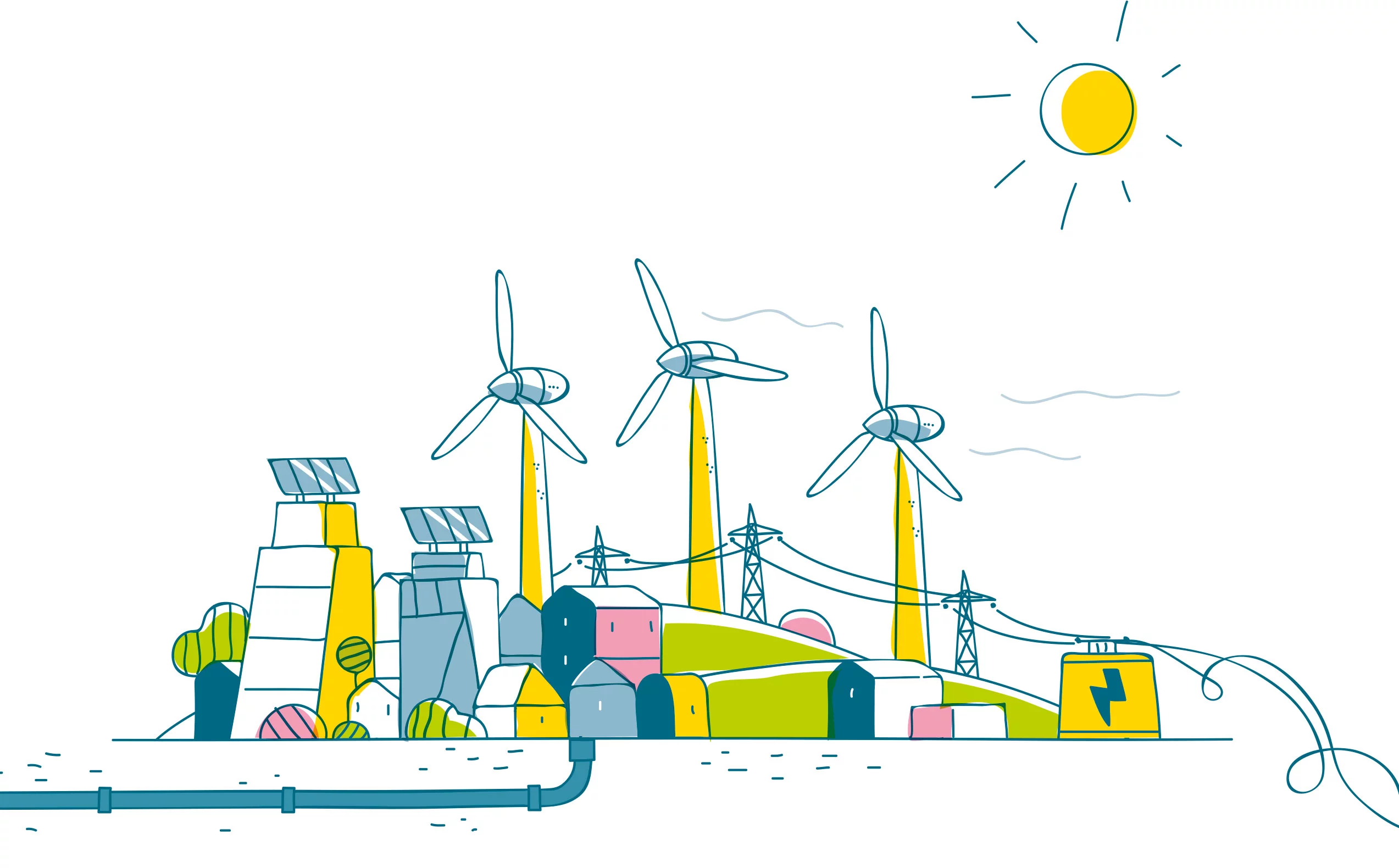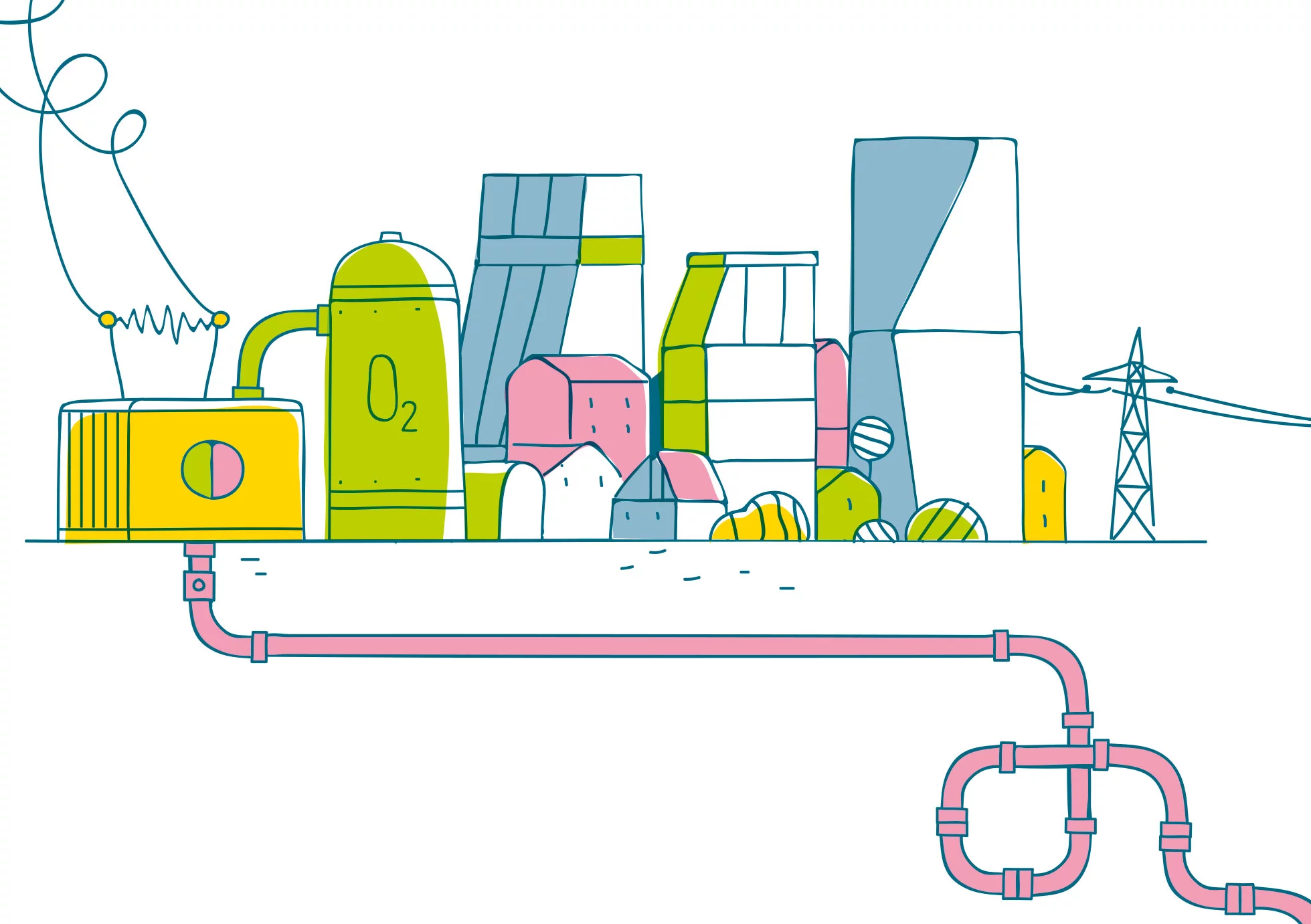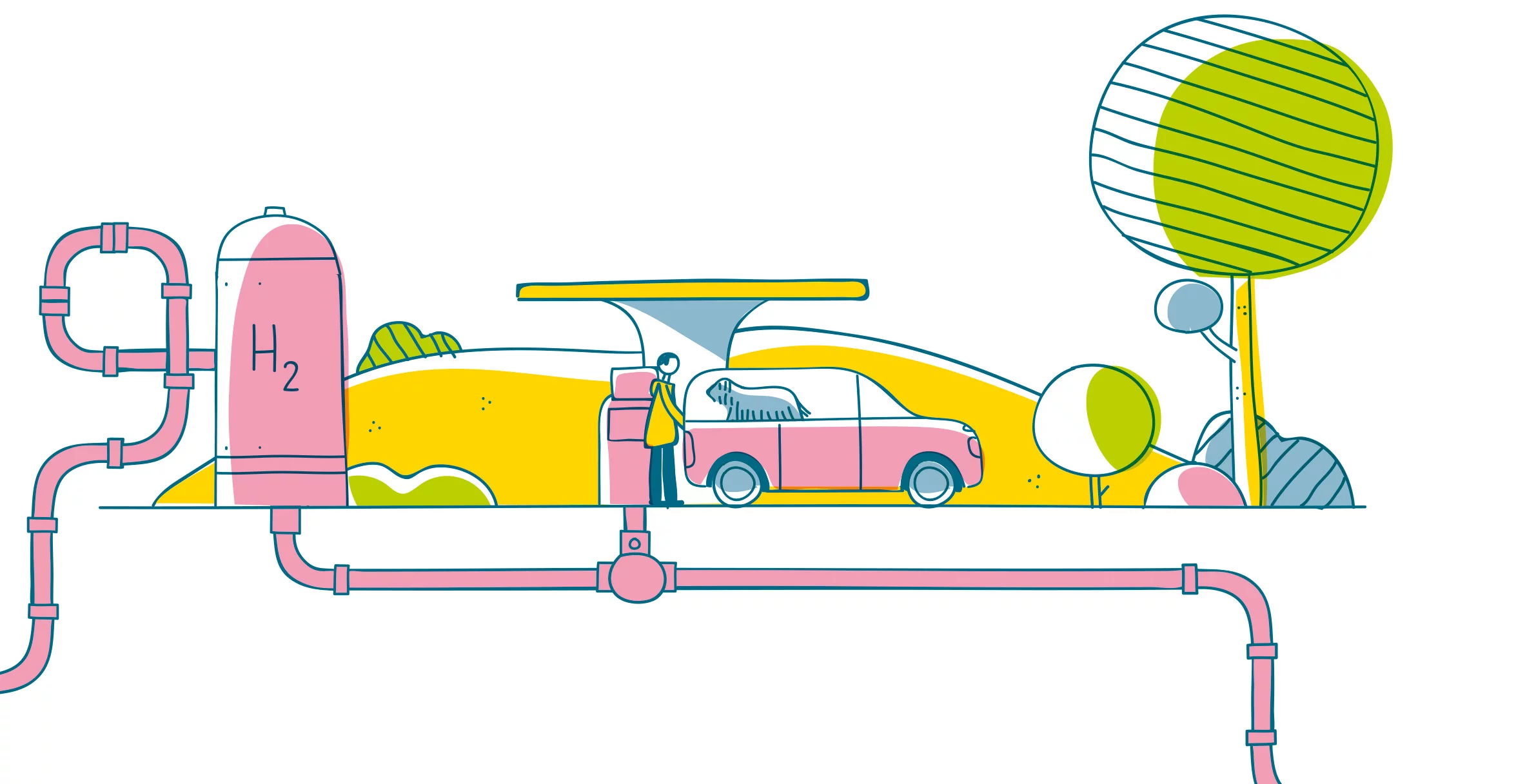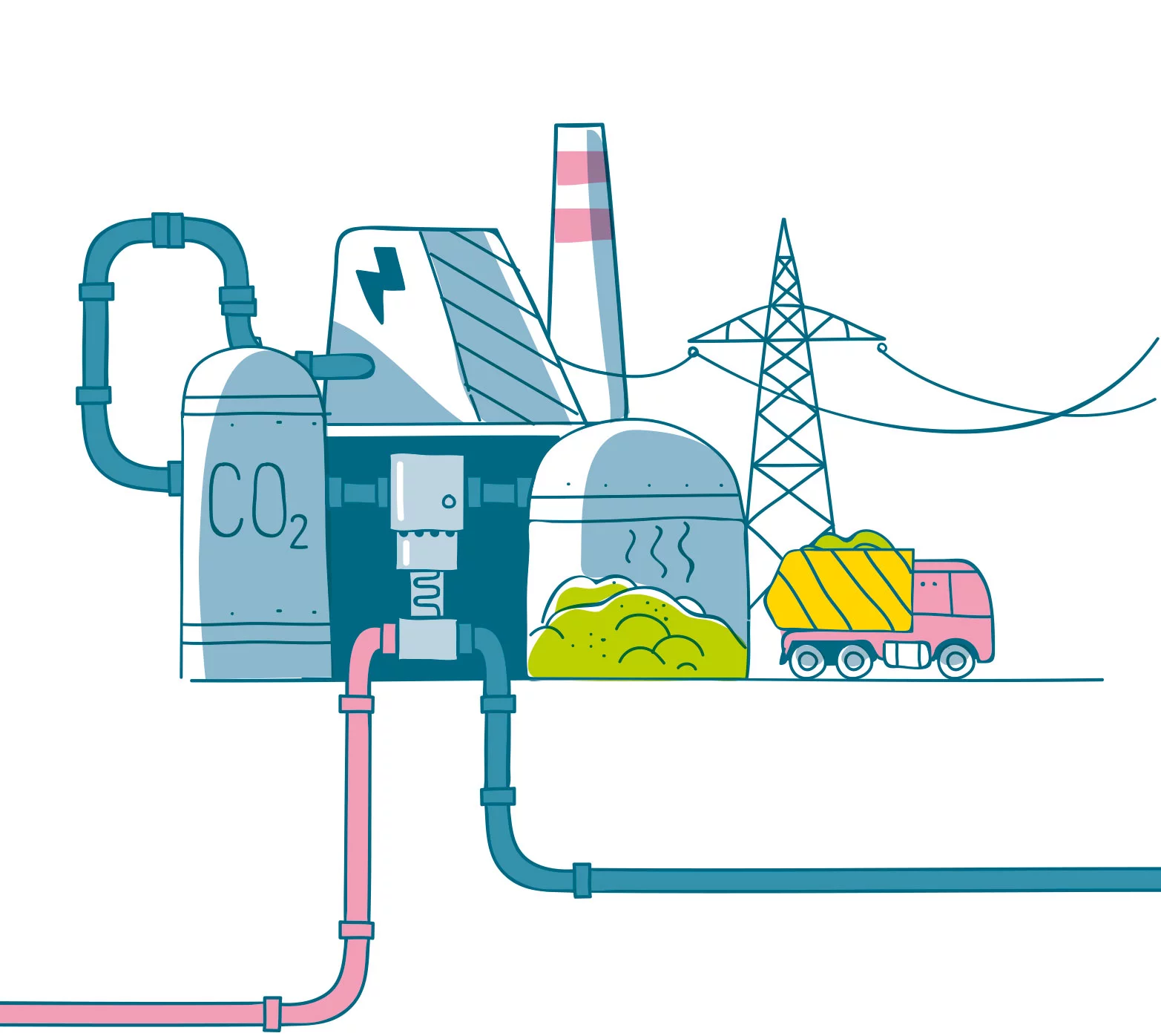At the Paul Scherrer Institute PSI, researchers are looking for solutions that enable energy from the sun, the wind, or biomass to be efficiently integrated into the Swiss energy system.
A city – let's call it Esiville – wants to become a trailblazer in sustainability and obtain its energy completely from sun, wind, and biomass. No sooner said than done – a wind farm is built, photovoltaic panels are installed on the roofs, biowaste is collected and processed into biogas. The cars drive with biogas, the photovoltaic and wind facilities provide electricity to the businesses, the homes, and the hospital. Then suddenly: blackout. What happened?
This fictitious scenario brings the challenge of future energy systems into focus. With hydroelectric power, Switzerland already gets 60 percent of its electricity from a renewable energy source. In the future, however, electric power in Switzerland is supposed to be supplied without nuclear plants. These cover around 35 percent of the demand for electricity. A supply shortfall is imminent. Yet with sun, wind and biomass, additional energy resources are available to Switzerland that, until now, have hardly been used. To exploit their potential, the Energy Strategy 2050 provides for the development of these new renewable energy resources. But there's a catch, particularly when it comes to using the sun and wind: With these, power can indeed be generated sustainably, but the electricity production depends on the weather, the time of day, and the season. This variability could put the grid out of balance – sometimes less power than is needed would be supplied, sometimes more. The consequence: the blackout sketched above.
Energy storage as a leverage point
Energy System Integration is concerned with the question of how energy from different sources can be integrated in such a way as to ensure the most efficient use possible and at the same time guarantee the supply that people need.
Researchers at the Paul Scherrer Institute PSI use examples such as Esiville to think through possible scenarios for the energy future. Common to all scenarios is the research challenge resulting from the variability of electricity coming from the sun and other renewables. Ways need to be found to store this energy temporarily. Then it can be used when it is needed.
While batteries providing medium-term storage for relatively small amounts of energy are becoming more mainstream for the home market, supplying energy to factories or entire cities calls for larger-scale thinking. Concepts for long-term energy storage are being sought so that, for example, the energy of a sunny summer can be saved for use in the winter.
In Switzerland, pumped-storage hydropower plants are already in use on a large scale for energy storage. The existing plants, however, will not be sufficient for a complete conversion to a power supply based on renewable energy sources.
Linking the electricity and gas grids
One promising candidate for long-term energy storage is a technology known as Power-to-Gas. It is based on using excess power, such as what builds up today with a surplus of sun and wind, for the production of hydrogen from water. The hydrogen can be stored and put to use later by various means: as fuel for fuel-cell vehicles, or for stationary fuel-cell systems that provide heat and electricity on scales ranging from an individual home to a small community – an especially environmentally friendly implementation, since pure water is both the starting product and the end product, and there are no CO2 emissions. The hydrogen can also be fed directly into the existing natural gas network, which delivers energy where it is needed.
Yet feeding hydrogen into the natural gas network is possible only to a limited extent: In Switzerland, the upper limit is two percent of hydrogen. But it's possible to take a further step and process the hydrogen into methane – synthetic natural gas. That only makes sense, though, if a surplus supply of hydrogen is available: Each conversion step brings about a loss of efficiency, which should be avoided as far as is feasible
, says Peter Jansohn, head of Energy System Integration at PSI. The efficiency factor indicates how much of the original energy can still be used after the various conversion processes.
Under the Power-to-Gas processes, with an efficiency factor of 60 percent, storage by way of hydrogen is most efficient. After one hydrogen-to-methane processing step, the efficiency is only around 40 percent. Running the hydrogen over the fuel cell has an overall efficiency of around 45 percent. Here a clear mandate remains for the researchers at PSI, to optimise the process in such a way as to achieve a higher yield. With electrolysis, 70 percent is considered a realistic goal. For the 'roundtrip efficiency' – electricity to hydrogen to electricity – we see an efficiency factor of around 50 percent as a long-term potential
, Peter Jansohn estimates. His forecast for the path via hydrogen to methane is around 55 percent. An additional process step in the direction of electricity means a further loss in efficiency, so that with the path via methane, at most one-third of the original electrical energy can be recovered.
Using energy that would otherwise be lost
At first glance, the efficiency of all these approaches looks low. The crucial factor, though, is that the energy being used would otherwise be lost – so the efficiency would have been zero percent. This concept, of exploiting what is already there, also lies behind PSI research into the production of methane from biodegradable waste. This accumulates in great quantities as biowaste from households and the agricultural and food industries, as well as in sewage sludge from wastewater treatment. Especially promising, and already in use, are processes that generate methane from raw biogas arising from fermentation of the biogenic components of waste. Here too, a clear increase over the current yield is the goal of the PSI researchers. They have developed a technology that can extract around 60 percent more methane from biowaste, exploiting the raw biogas almost entirely.
To ensure that these and other energy storage research efforts will also bear fruit in practice, PSI has established a test platform for Energy System Integration, the ESI Platform. It makes the infrastructure available for specialised subsystems in which researchers can, on a pilot scale, take a first step in advancing research results from the laboratory toward practical implementation. For this purpose, the ESI Platform is available to partners from science and industry. Partners can either work together with PSI researchers to refine technologies or use the infrastructure to try out their own technologies. As an offer to industry, the ESI Platform should facilitate testing the potential of new technologies without the need to make large investments early in the development process, as implementing a technology directly into the industrial setting would require
, Jansohn explains.
That the concept works is demonstrated by active collaborations with the Zurich-based power company Energie 360° and the fuel-cell manufacturer Swiss Hydrogen, based in Freiburg.
Since the bottom line is that commercial feasibility determines whether or not a technology will be implemented on an industrial scale, this cooperation is always accompanied by feasibility analyses. Already on the level of fundamental research, we take the problems of industry into account
, stresses Thomas J. Schmidt, head of the Energy and Environment Research Division at PSI. Efficient, long-lived, and cost-effective – these are the words one always hears from the energy research laboratory at PSI when the subject is energy storage. So, for example, PSI researchers developed a new nanomaterial that could make the electrolytes that are needed for hydrogen production significantly less expensive in the future.
Research is full of ideas about how the Swiss energy system could be designed for sustainability in the future. Technologies are developed, tested, and also rejected. No one knows yet which of the technologies will take hold in the end. Some technologies will mutually complement each other; with others, a decision will have to be made. Here our role as a research institution is to be the 'honest broker'
, Schmidt says. Research can help partners come to sensible decisions by enabling them to gain a clear view of the advantages and disadvantages of one technology or another. But research can't make the decisions: We can create and impart knowledge, and we see that as the primary mission of a research institution.
Text: Paul Scherrer Institute/Martina Gröschl
Additional information
New technology under real-world testing: An interview with Peter Dietiker, division manager at the Zurich-based power company Energie 360°, about the collaboration with PSI.Profitable for both sides: An interview with Alexandre Closset, CEO of Swiss Hydrogen, about the collaboration with PSI.





